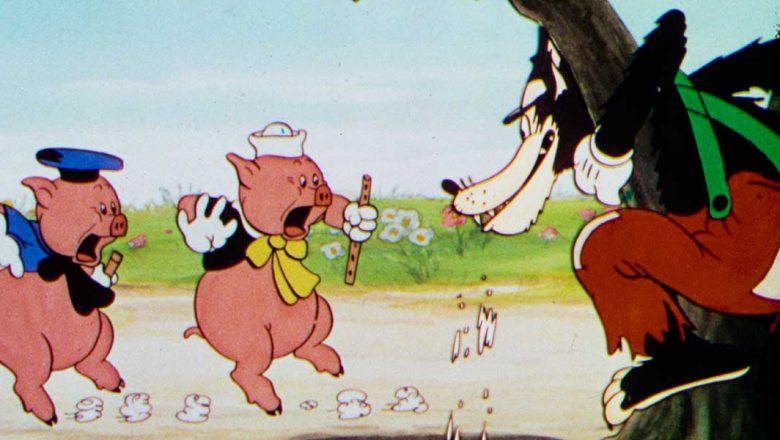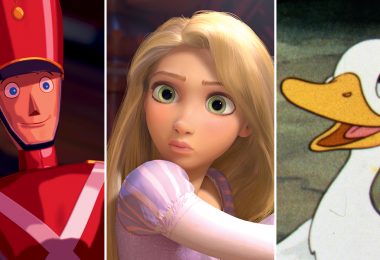By Charles Solomon
The release of the celebrated Silly Symphony Three Little Pigs in 1933 couldn’t have been more timely. It was the worst year of the Depression, and “Who’s Afraid of the Big Bad Wolf?” became an anthem of hope for millions of people weary of bad news and bill collectors. Two years later, on November 28, 1935, a writer in the Dublin Evening Herald said “Walt Disney’s bright idea of ‘Three Little Pigs’…appeared at the time of American’s vast depression, and it was not too much to say that the quaint little characters saved the morale of America.” In honor of 85 years of one of the most beloved Disney shorts of all time, here are 6 facts about everyone’s favorite porcine protagonists.
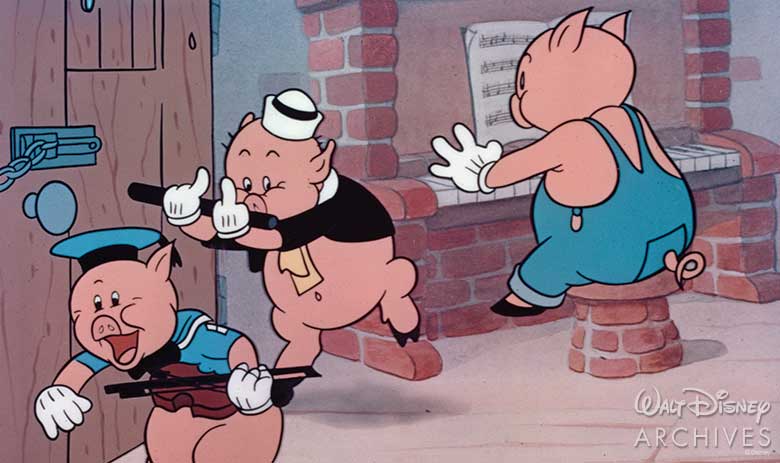
1. Suitable for Sequels
Disney used the Pigs in three sequels: The Big Bad Wolf (1934), Three Little Wolves (1936) and The Practical Pig (1939), none of which equaled the success of the original, but all of which kept the characters in the public eye.
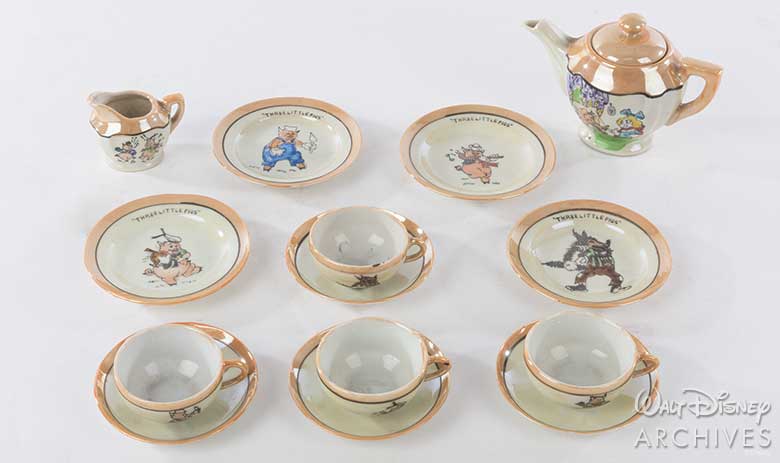
2. Milestone Merchandise
Fifer, Fiddler, and Practical Pig became some of the Studio’s most extensively merchandised characters. In addition to sheet music and 78 rpm records of “Who’s Afraid of the Big Bad Wolf?” there were plush toys to take to bed and sand pails for outdoor play. A painted bisque toothbrush holder encouraged kids to brush after cutting out the images of the Pigs on the Post Toasties box during breakfast. Boys could wear Three Pigs neckties to parties while girls carried handkerchiefs printed with the characters in their Three Pigs pocketbooks; celluloid Three Pigs decorations graced birthday cakes. The Ingersoll-Waterbury Clock Company, which made the Mickey Mouse watches of that era, sold Three Little Pigs wrist watches, alarm clocks and pocket watches. The latter bore the inscription “May the Big Bad Wolf never come to your door—Walt Disney” on the back of the case.
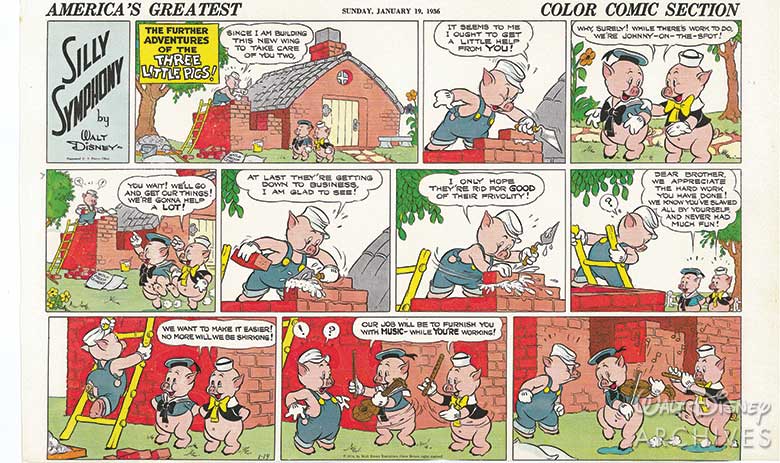
3. From Screen to Page
A loose adaptation of Three Little Pigs was serialized in Sunday newspapers from January 19, 1936, to August 23, 1936, in the “Silly Symphonies” comic strip. The Practical Pig ran two years later, May 1, 1938, to August 7, 1938.
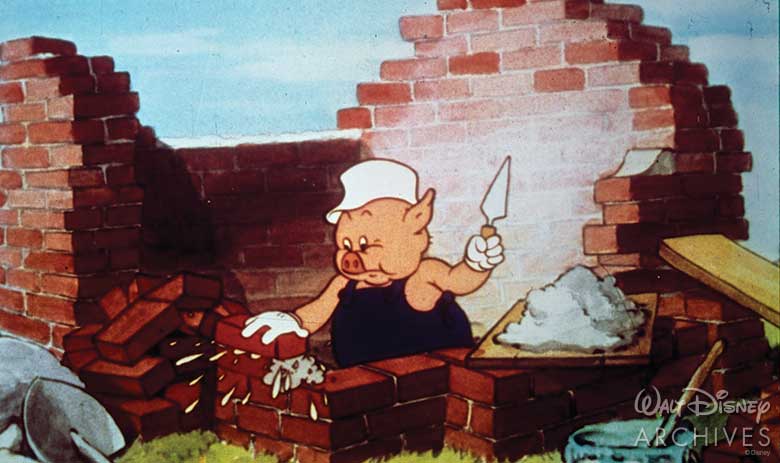
4. Model Citizens
After they appeared in the Canadian bond-buying film The Thrifty Pig in 1941, the Pigs continued to do their bit to boost both military and civilian morale during the Second World War. In the 1942 children’s book The Victory March: The Mystery of the Treasure Chest, the Three Pigs, Donald, Mickey, and other Disney character pursue the Wolf and his nephews around the monuments of Washington, D.C., when they try to steal Donald’s treasure: A United States Saving Stamp. Made at the suggestion of the Treasury Department, the book encouraged children to invest their pocket money in the 10-cent stamps, just as their parents bought War Bonds.
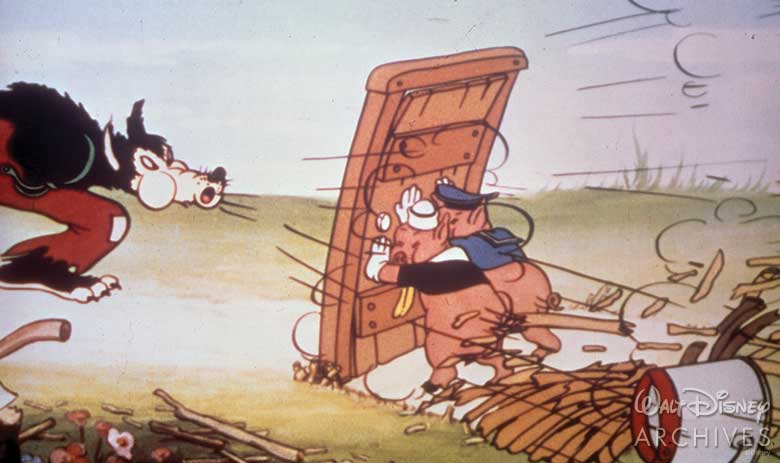
5. Working Title: A House Divided
The Animation Research Library at the Disney Studio contains sketches for an unmade war-themed film, A House Divided, with the Pigs as defense plant workers. Naturally, Practical rises early, bicycles to the factory, works hard, and buys bonds. Fifer and Fiddler are taken in by “Smitty”—the Wolf—recast as a black marketeer, who tricks them into wasting their money on useless junk instead of saving. At one point, Smitty offers to sell them gasoline (which was rationed) at the unheard-of price of a dollar a gallon!

6. A Parcel of Pigs
The Pigs have remained as popular in peace and prosperity as they were in war and hard times, something collectors of both antique and recent products can attest. On a typical day, eBay may list 1,000 items related to Three Little Pigs. Eighty years after their debut at the depth of the Depression, Fiddler, Fifer, and Practical have found new Big Bad Wolves they don’t fear. And they remain beloved to Disney fans everywhere.


